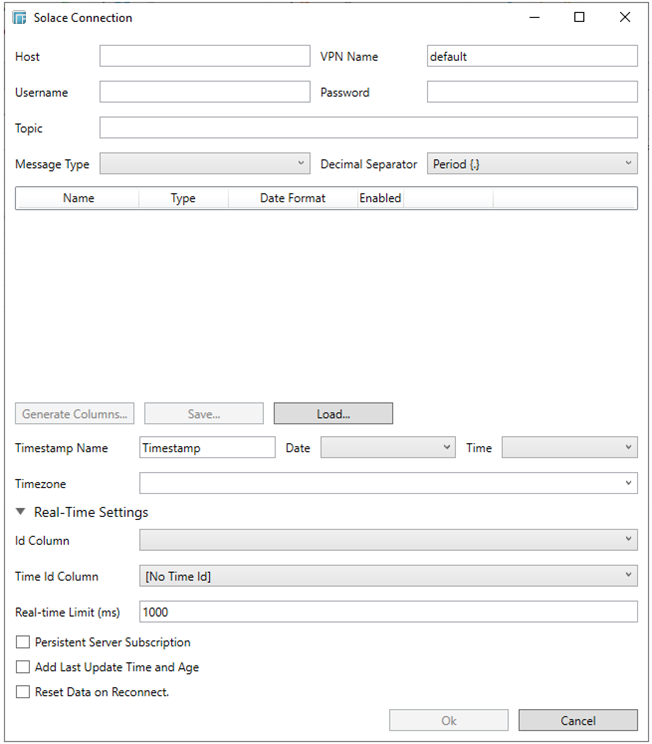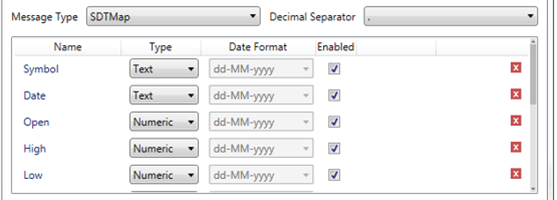Solace
The Solace connector allows connection to Solace’s message bus on a real time streaming basis. Specifically, the connector allows Panopticon Designer (Desktop) to subscribe to messages that are published in particular topics in Solace and consequently, perform operational analytics.
Using Solace
-
When creating a new data table, select Solace from the Connect to data dialog. The Solace Connection dialog is displayed:

-
Provide the Host, VPN Name, Username, and Password required to connect to Solace.
-
Enter the Topic or the queue physical name.
-
Select any from the following Message Types:
-
-
SDTMap
-
JSON
-
XML
-
Text
-
If Text is selected, confirm the Decimal Separator, Text Qualifier, Column Delimiter, and if the first row of the message include column headings.
-

-
Select either the dot (.) or comma (,) as the Decimal Separator.
-
The schema of the source file is then defined by clicking Generate Columns…
This populates the list of columns, with the data type found from inspecting the first ‘n’ rows of files.

At this point, the retrieved schema can be modified to:
-
-
Disable specific fields
-
Change Data Types (e.g., a numeric value should be cast to a text string)
-
Specify how to parse the Date/Time format
-
-
NOTE:
-
To parse and format times with higher than millisecond precision, the format string needs to end with a period followed by sequence of lower case Fs. There can be no additional characters following them.
-
For example: yyyy-MM-dd HH:mm:ss.ffffff
-
-
Specify whether to retrieve the field
-
For JSON, Text, and XML message types, modify or select:
-
-
Name
-
XPath/JsonPath/Text Column Index (for example, price/@stock)
-
Type (Numeric, Text or Date/Time)
-
Date/Time format when the Data Type is Time
-
Enabled (determines whether the message field should be processed)
-
JSON

Text

XML

Click  to delete
a column in the list.
to delete
a column in the list.
-
You can opt to save the columns definition into an XML format by clicking the Save button. The saved XML files are placed in …\Public\Public Documents\Datawatch Desktop\Column Schemas.
-
Click Load to load the column schema.
-
To create a new Timestamp field, enter a new Timestamp Name and then select the valid Date/Time from either a single Date or Time field, or a compound column created from Date and Time fields.

-
The time zone of input parameters and output data is by default unchanged. Changing the time zone is supported through the Timezone list box, based on the assumption that data is stored in UTC time and outputs are presented in the selected time zone.
Likewise, the time zone can also be parameterized.
-
Expand Real-Time Settings.

Refer to Defining Real-Time Settings for more information.
-
Click OK to confirm the selection and retrieve the record set into Panopticon Designer.
Initially, there is no data displayed in the Data Source Preview section of the Edit Data Table window.
Click the Start Preview button to display the data and refresh the values depending on the defined Refresh Period.


